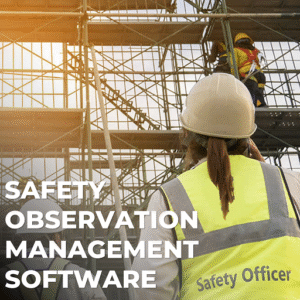The Role of Drones in Safety Inspections & Compliance

Introduction
In high-risk industries, ensuring workplace safety and regulatory compliance is a non-negotiable priority. Traditionally, safety inspections required manual checks—often in dangerous, hard-to-reach, or time-consuming areas. Today, however, drones are revolutionizing this process. The role of drones in safety inspections and compliance is expanding rapidly, offering faster, safer, and more accurate assessments. From oil rigs and power plants to construction zones and manufacturing units, drones are helping organizations boost EHS performance while meeting stringent regulatory demands.
Enhancing Safety Through Remote Inspections
One of the most impactful benefits of drone technology is the ability to perform remote visual inspections. Drones equipped with high-resolution cameras, thermal sensors, and even gas detectors can access areas where sending workers would be risky or impractical.
Examples of drone-assisted inspections include:
-
High-altitude scaffolding, towers, or roofs
-
Confined spaces like tanks or silos
-
Hazardous environments post-accident or leak
By minimizing the need for manual intervention in dangerous settings, drones significantly reduce workplace injury risks while improving inspection frequency and reliability.
Boosting Compliance with Accurate Data Capture
Regulatory bodies require accurate, time-stamped, and traceable inspection records. Drones provide a clear audit trail through geotagged photos, videos, and sensor data. This digital documentation helps organizations stay audit-ready and comply with standards like OSHA, ISO 45001, and national safety codes.
Key compliance benefits:
-
Real-time data syncing with EHS platforms
-
Visual documentation of corrective actions
-
Easier reporting and regulatory submissions
Moreover, drone data integrates seamlessly into cloud-based safety management systems, making long-term tracking and analysis simple.
Improving Efficiency and Cost Savings
Traditional safety inspections can be time-consuming, labor-intensive, and costly—especially when scaffolding, shutdowns, or specialized gear is needed. Drones reduce inspection time from hours to minutes and cut costs by eliminating redundant manual labor.
Cost-efficiency benefits include:
-
Faster identification of issues
-
Reduced downtime for inspections
-
Lower labor and equipment rental costs
Many companies now conduct routine inspections more frequently without increasing the budget, all thanks to drone technology.
Real-Time Risk Detection with Advanced Sensors
Modern drones are more than flying cameras—they come with a range of environmental and industrial sensors. These can detect heat, gas emissions, radiation, or structural weaknesses long before a human would notice them.
Advanced applications:
-
Thermal imaging to detect overheating equipment
-
LIDAR to map construction site safety zones
-
Gas detection for hazardous leak identification
This real-time data supports proactive safety measures and reduces the likelihood of unplanned incidents.
Overcoming Challenges in Drone Adoption
While drones offer transformative benefits, there are barriers to implementation. Regulatory approvals, pilot training, privacy concerns, and integration with existing systems can create friction.
Solutions include:
-
Partnering with certified drone service providers
-
Using drone software that complies with data privacy laws
-
Training internal teams or outsourcing to trained operators
Many industries are now embracing standardized drone safety programs to overcome these challenges effectively.
Conclusion
Drones are redefining how companies conduct inspections, manage risks, and maintain compliance. By eliminating human exposure in hazardous zones, capturing high-quality data, and streamlining reporting, the role of drones in safety inspections and compliance is proving essential in building safer, more compliant workplaces. As drone technology continues to advance, businesses that embrace it early stand to benefit the most in operational efficiency, safety performance, and regulatory readiness.
QHSE SOFTWARE SOLUTION
EHS Observation Management Software
Sources of EHS Observation Management Software
Features of EHS Observation Management Software
Benefits of EHS Observation Management Software
Support for EHS Observation Management Software
FREE Demo of EHS Observation Management Software
CONTACT
Akshar Management Consultant
+91-9909979870
